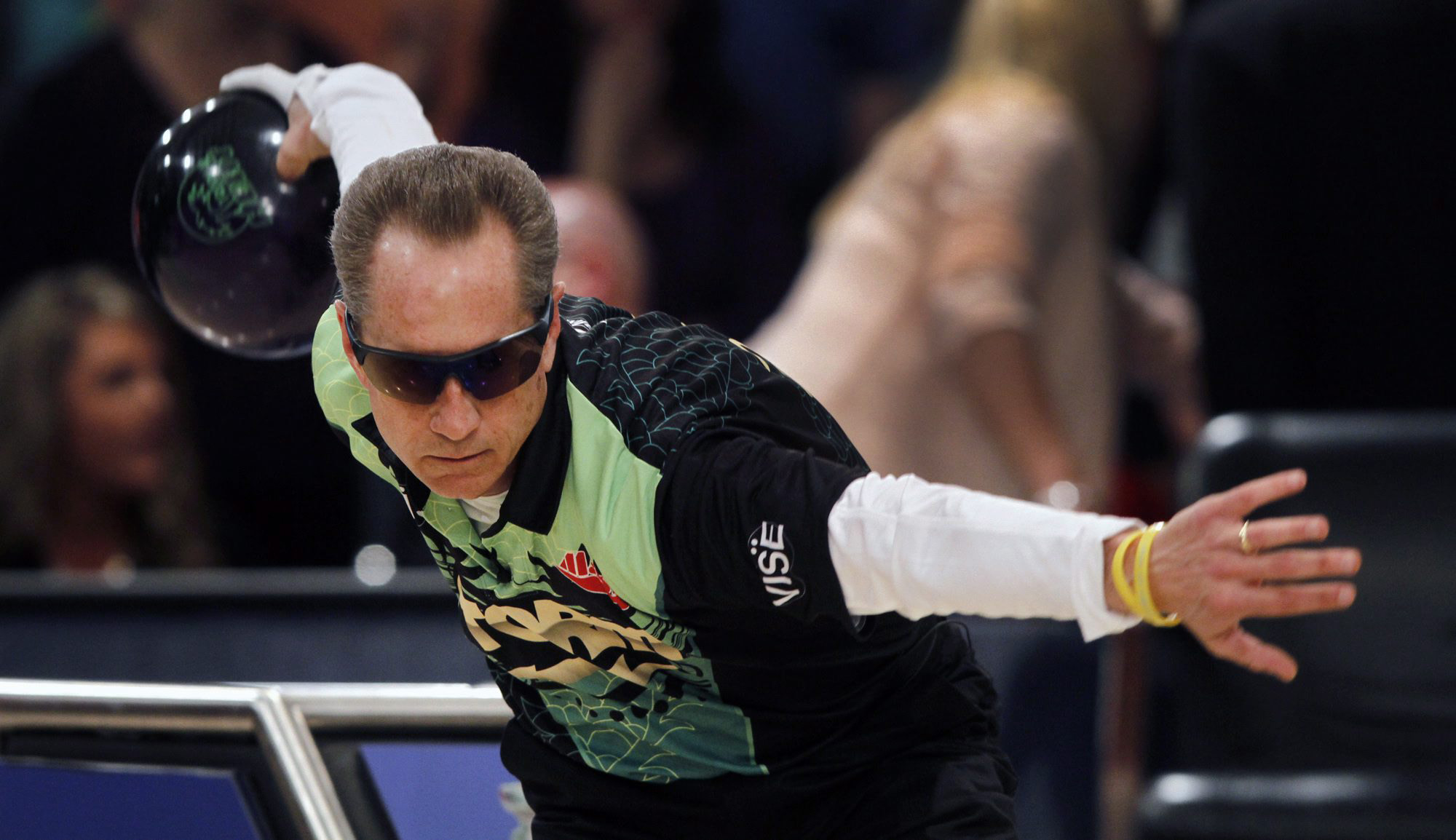Felix Rosenqvist is mere minutes removed from a fairly dispiriting exercise. It’s the Formula E season’s penultimate race day — the series’ third year wrapped with Saturday and Sunday races in Montreal at the end of July — and Rosenqvist entered the final stage of qualifying as one of five drivers with a shot to earn top spot on a 20-car grid that, unlike most high-level championships, is determined just a couple hours before the actual race. His critical lap did not go well, though. After crossing the line, Rosenqvist said on the Mahindra Racing team headset that the tires felt a bit off right from turn one. As he walks back from the pit toward the garage, the Swede’s fire-retardant suit is unzipped to the beltline, with the arms dangling down around his legs.
Rosenqvist’s disappointment is matched by the crew of engineers that populates Mahindra’s temporary headquarters, as well as team principal Dilbagh Gill. The mood, however, does not extend to a gaggle of men who appear to be having the time of their lives. Most are wearing Mahindra polos and all of them are sporting passes around their necks that provide access it seems safe to say they don’t experience much. The group is associated with Mahindra’s tractor business in Quebec and they giddily examine the electric single-seaters driven by Rosenqvist and his veteran teammate, Nick Heidfeld. When Gill wanders close to the pack, they immediately ask for photos in front of the cars, passing their phones around while the manager nimbly shifts from frustrated team member to smiling ambassador.
Then Rosenqvist enters their direct vicinity. Despite his sour circumstances, the 25-year-old seems to have no issue accommodating requests for pictures. One by one, the revelers put an arm around the driver, their middle-aged frames standing in contrast to his slim, athletic figure. Just as a pose is being struck, a grinning man leans in to ask one of the world’s top young driving talents a simple question: “And your name is?”

Formula E is not yet a well-known entity in the global sports landscape. Even within the motorsports community, the fledgling championship is subject to some bewildered looks, to say nothing of lingering snickers. These days, however, there’s less and less fuel for skeptics as Formula E has attracted crucial support from behemoth car manufacturers that are convinced competing in the world’s first all-electric racing series is going to help them hawk their production cars when batteries bump gas tanks. Mega-brands like Audi, BMW and Porsche believe they can’t go fast enough when it comes to refining their electric products. That star power is matched by celebrities like Richard Branson and Leonardo DiCaprio — the former a team owner, the latter an early investor in the series — who believe the green engineering on display in Formula E can play a big part in the battle for a cleaner planet. The championship and its teams still have miles to go before becoming an everyday part of the sporting lexicon. But the technology at the heart of this endeavour lends the series a road relevancy that will only increase over time, even if the rumble of conventional combustion-engine racing still obscures the high-pitched hum of change.

Speaking to curious people around the Mahindra garage is one of Gill’s lower-stress activities during a race weekend. When Heidfeld or Rosenqvist are on the track, he’s glued to a row of monitors that display everything from the position of their rivals to how much battery power they have left in a charge. When the cars are parked, Gill often holds court with people like the jovial Mahindra tractor crew or others with more purposeful looks, like the group from the World Smart City forum. As engineers scoot around Mahindra’s four cars, the gregarious side of Gill shines while he plays teacher: The cars do about 225 km/h and are limited to a power output of 170 kilowatts during the race and 200kW during qualifying; the batteries take about an hour to charge; nobody is concocting a magic potion in that box, it’s just fog rising off the dry ice that’s used to cool the battery. See those three small lights near the steering wheel? Green means it’s all good, purple means take caution and red means stay clear to avoid the risk of electrocution.
It’s all second nature for the Mahindra crew now, but only after an extensive period of reprogramming. “As an engineer and as an individual, it was fascinating and almost like going back to school to pick up text books again, but they’re all about electrical circuits and control systems rather than pistons, [connecting] rods and exhaust,” says chief engineer Vinit Patel, whose extensive racing background includes being the tire engineer for Sebastian Vettel when the German won a fourth-consecutive Formula 1 title in 2013.
Earlier that year, at the International Motor Show in Frankfurt, Germany, FIA president Jean Todt and Alejandro Agag, CEO of Formula E holdings, unveiled the first Formula E car. The stated mandate was to promote environmentally friendly automotive technology through high-performance, zero-emission racing. With a sports background and a passion for tech, Gill was the perfect candidate to head up Mahindra’s Formula E outfit. Ask the 46-year-old about his own long-ago experience racing motorbikes and he’ll tell you his enthusiasm dwarfed his ability. He has the war wounds to prove it, too, including a scar above his temple that’s revealed when he pulls off his glasses. The way to avoid true catastrophe in bike racing, he says, is knowing how to dump the thing when you’re in trouble; he has hard-earned wisdom about when to stick and when to flee.
Mahindra’s decision to jump into Formula E was partially driven by the fact it had gotten involved with Moto3 bike racing a couple years earlier and experienced a sales bump. Beyond that, even if Formula E failed the way many predicted it would, Gill believed it would be a worthwhile exercise, something that would do wonders to accelerate research and development on the electric cars Mahindra was already making. It could also help the Indian company — which has numerous divisions under its banner, including information technology, defence and financial services — grow its global brand as a scrappy middleweight trying to overtake traditional automotive heavyweights on the track. “This is a bet worth taking,” he says, remembering the Mahindra mentality at the time.
Four years on, Formula E critics and backers alike would have to concede surprise at the way other companies have come to share that mindset. Jaguar joined the championship ahead of this season, bringing the total to 10 teams. Ferrari has gone public with its interest. Then, just before the races in Montreal, came an announcement that sent a charge through the motorsports world: Mercedes, presently the king of F1, and Porsche both confirmed they would be shuttering other established racing programs (Mercedes is pulling out of the DTM series, while Porsche is exiting LMP1) to focus on Formula E for the 2018–19 season. If manufacturer participation is your metric, the series is flying. Reaching wider audiences and establishing a large base, though, remains an ongoing challenge. “One of our tasks is to convert petrol heads into spark heads,” Gill says.
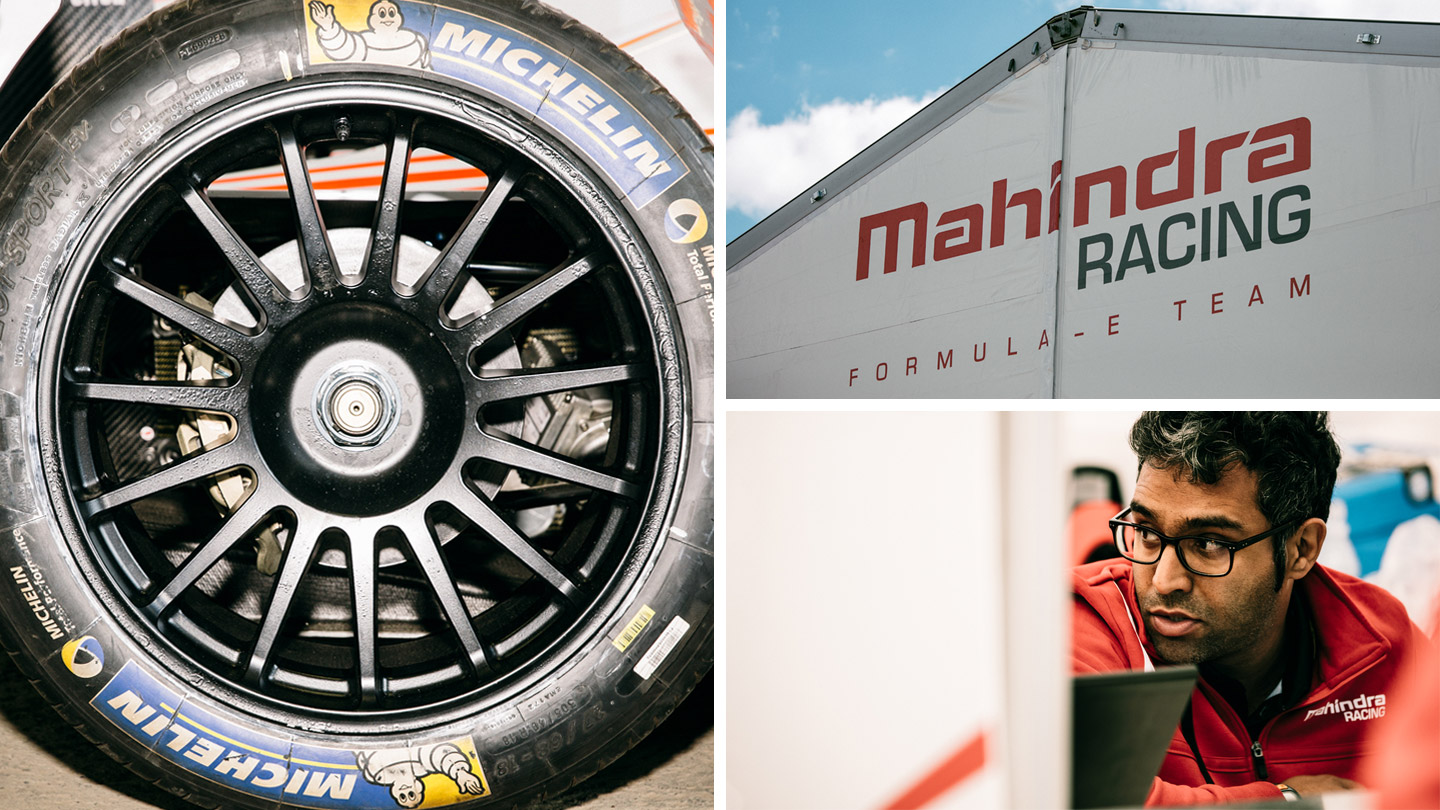
Allan McNish knew he was out of excuses. Lucas Di Grassi, winner of the first-ever ePrix while driving for ABT Schaeffler Audi Sport, had been in his ear about Formula E for a while. And with an event coming to the famous racing streets of his Monaco home in May of 2015, McNish — a former F1 driver who has a long history racing for Audi Sport — figured he’d better grab the kids and get in the grandstands. He arrived at the track with the wary mindset of a motorsports veteran who’d seen numerous championships slink away after landing on the scene with squealing tires. “I didn’t think it would make the end of the first season,” admits McNish.
The Scotsman was never a candidate for instant conversion, but over time he grew more involved with the series. In Season 2, he filled in for close friend Dario Franchitti when the latter had to skip out on his commentary duties in Berlin to attend the Indianapolis 500. Now, as the 47-year-old transitions from Audi driver to executive, he’s elbow-deep in the championship he once doubted as head of the company’s Formula E entry. “You have to come here with a reset, a clean mind, not thinking back to what your experiences are because it’s different,” says McNish, wearing team-branded gear while sitting on one of the parked golf carts used to zip around the garages and pits in Montreal. “Some people will say different is not good: Well, different is different, and different can be better.”

Indeed, the distinctions between Formula E and its sister series are impossible to miss. Traditional racing is, perhaps, the most visceral sporting experience on offer, thanks to engine roars that overwhelm your ears and press against your chest. And while Formula E cars are by no means silent — they produce a whine that, unlike a combustion engine, does little to obscure the clatter of a chassis bouncing over a curb — the relative quiet does take some getting used to, as would baseball without the crack of the bat. For Patel, the switch to electric meant losing one of his go-to methods for figuring out what’s up with the car. “You didn’t realize before how much you relied on your ears,” he says.
Formula E’s approach has been to target a younger generation of fans and families — most of whom would almost certainly find attending Formula 1 events cost-prohibitive — and that demographic dominates Montreal’s “e-village” population. On site, you’ll find Doc and the DeLorean posing for pictures, reminding us all of the Back to the Future vision we once held for advanced transportation. The notion of what’s ahead has now morphed into something far more tangible and a variety of electric road cars are also on display for fans to inspect. Model Kate Upton lent some glamour to the event and was more than happy to talk about how fast her Tesla goes. It’s all a part of the process to strip away the stigma surrounding battery-powered vehicles and the antiquated idea they don’t have it where it counts. “If you sit at a traffic light [with even a smaller electric car] and really punch the throttle, you’ll feel an acceleration that you can’t get from any other kind of technology,” says Patel. “It’s down to torque. Torque is what you feel in the seat of your pants. If you’ve got a big muscle car, if you put your foot down, you need a huge engine and a lot of fuel to feel that torque. With electric it’s more direct.”
On a practical level, Gill believes that within 10 years cars that can travel more than 300 kilometres on a single charge will cost about $10,000. If you just bought a new car, the odds are increasing that the next one you purchase will be electric, especially considering the proliferation of government incentives around the world to ween their citizens off fossil fuels.
Virtual racing is also a big draw and enthusiasts lined up at a couple stations in Montreal for a chance to show their chops. In January, Formula E jumped into the eSports world by having its drivers compete in a simulated race with fans in Las Vegas. Regardless of which cities the championship visits — Hong Kong, Buenos Aires, Mexico City and Brooklyn were all on the Season 3 calendar — the races are always held downtown on converted street circuits to call attention to the fact that crowded, smog-ridden metropolises are where established habits must change. It also helps manufacturers showcase their electric power directly to the people who will soon be consuming it. McNish estimates that by 2025 roughly a quarter of the cars Audi sells in North America will be electric. “The motor industry is changing very, very quickly and motorsport has got to be, not just part of it, but it’s got to be a leading part,” he says. “If not, it becomes reasonably obsolete.”
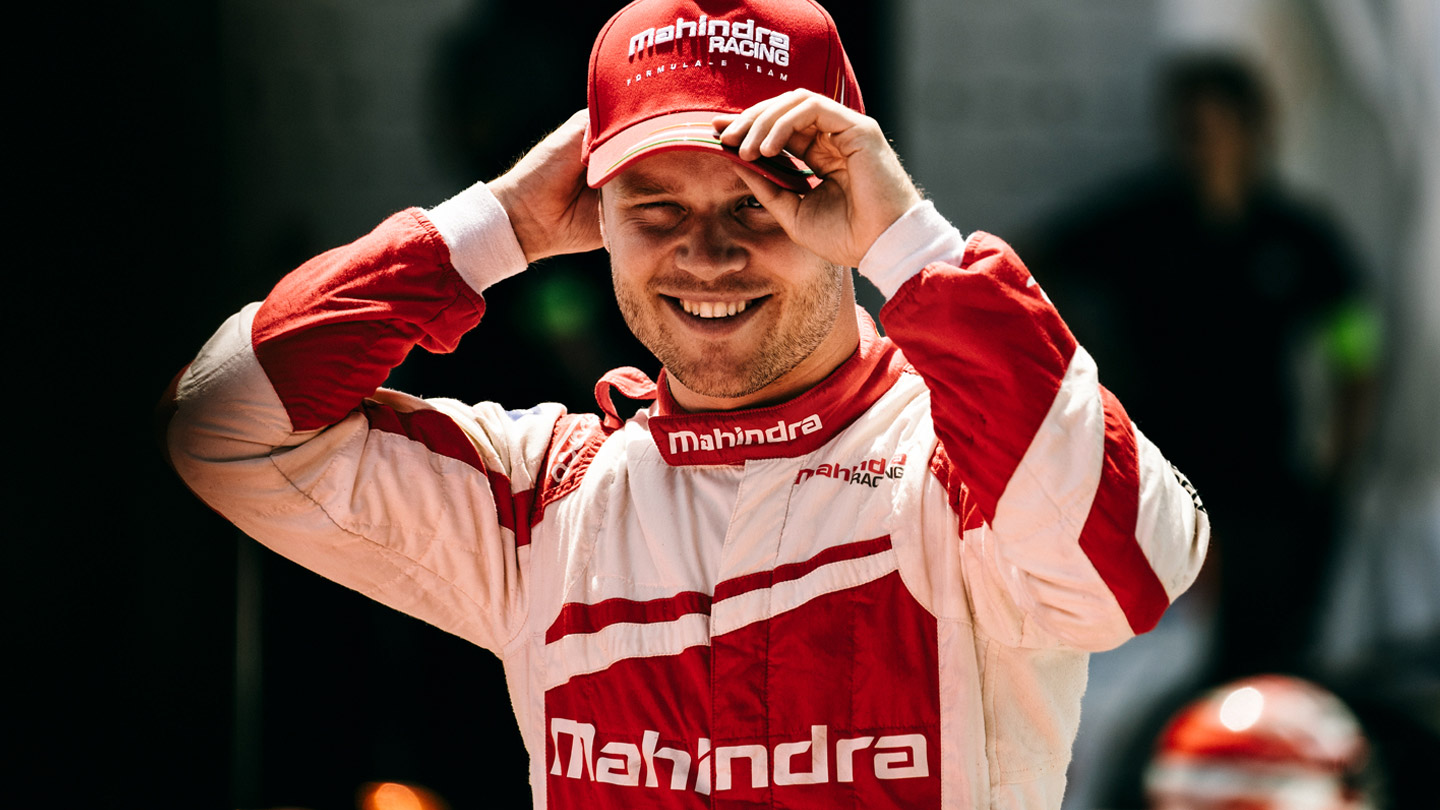
The word startup is often used to describe the culture of Formula E, and there is definitely a pervasive spirit of cooperation amongst teams as they all attempt to establish something new. Unlike Formula 1, where the wealthiest teams can spend lesser lights into the ground, there are only so many areas you can get ahead in Formula E — at least for now. In an effort to keep the playing field level and overall costs down, all cars race with the same chassis and battery. A boardroom meeting with the heads of each Formula E squad is more likely to feature conversations about how to drive the whole series forward than a collection of individuals ferociously fighting for their own best interest. “We are all important cogs in the wheel to make this successful and sustainable,” Gill says.
Of course, that congenial mentality — the teams even take part in a bicycle relay around the track on Fridays — melts quickly on race day. After the first ePrix in Montreal, Renault e.dams driver Sebastien Buemi — the Season 2 champ who started the day as the Season 3 points leader — walked the pit lane and got in three separate, searing confrontations with fellow drivers he felt had wronged him throughout the afternoon. If there’s any doubt about Formula E’s desire for fan appeal, consider its Twitter feed posted a video of Buemi’s entire mad march, complete with closed captioning.
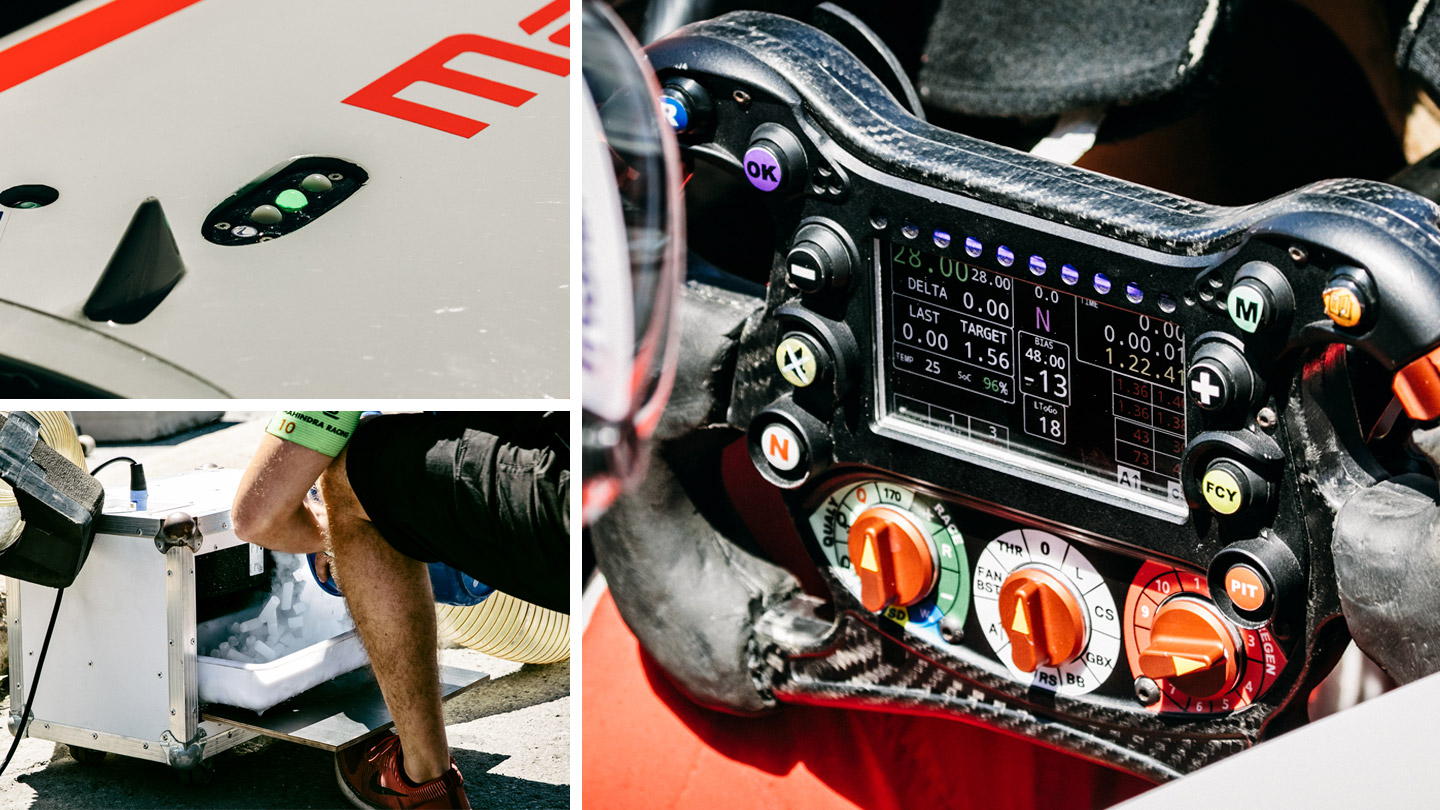
The mood in the Mahindra garage was only slightly better than Buemi’s after Heidfeld was forced to retire following a crash and Rosenqvist sunk through the field during the final laps to finish ninth. Gill wears yet another hat in the aftermath of a frustrating day, making sure to steal a quiet moment to check in one-on-one with both drivers. Having already had a chat with Rosenqvist, he puts his arm around Heidfeld while a machine that’s half tractor, half crane carries the German’s busted M3Electro back to the garage. With one race remaining on the year and about 12 hours to make repairs and adjustments before Sunday’s 8 a.m. practice session, Mahindra is in a dogfight with DS Virgin Racing — Branson’s squad — for third place in the team standings. Rosenqvist, with a strong final showing, can secure third place in the driver standings thanks largely to the fact he gave Mahindra its first-ever ePrix victory about six weeks earlier in Berlin.
The tension around Mahindra after Saturday’s race is something that seems likely to creep more and more into Formula E. In the first season, every team raced with the exact same car from tip to tail. Before the second season, the FIA lifted restrictions on the electric powertrain, located in the rear of the vehicle and home to the motor, inverter and gearbox. It’s that area companies are anxious to explore and develop as they try to demonstrate superiority over their rivals in this new racing frontier. “Manufacturers, when they get in [to a championship], they want to go fast and they’ll put in the money to be able to do it,” says McNish.

The opportunity to pilot these machines is also quickly becoming a more contested issue. Rosenqvist, a Formula E rookie who could be an F1 driver given the proper opportunity, says the quality of on-track talent was a huge lure when he was deciding on the next step in his career after seasons in Formula 3, Indy Lights and DTM. “That’s always where I want to be: where the good drivers are,” he says. “I had friends who, when I joined Formula E, they said, ‘What is this, what are you doing?’ And the same people actually come to me now saying, ‘Is there any opportunity? Do you know any team I can talk to for a drive?’ Everything has changed very quickly.”
For some drivers, competing in a quality championship with the ability to earn a low six-figure salary would be reason enough to sign up. And while those are, no doubt, significant factors for Heidfeld, the man with 183 Formula 1 Grand Prix appearances on his résumé also embraces the overarching, altruistic aspect of Formula E. “It was something that interested me; future technology, something environmentally friendly,” says the 40-year-old. “When I started with motorsports as a kid — go-karts when I was eight years old — back then I think most of society didn’t have the environment and nature [as top of mind] as now. I just wanted to drive and enjoy it. Now, obviously with time evolving, me being older, it’s great to combine the things because I don’t want to stop motorsports — this is what I love, this is my passion — and now to have something that is more environmentally friendly to promote is great.”
The best way to do that is with a compelling product, and the tighter street circuits mean there’s more rubbing and overtaking in Formula E than your typical open-wheel series. On the final hectic race day of Season 3 — teams complete two practice sessions, qualifying and the race itself in about nine hours — Rosenqvist gives himself a great chance to stay ahead of the fray by winning pole position. Heidfeld starts just four spots behind him in fifth. When both Virgin drivers pass Heidfeld in the race’s early stages, a loud cheer rises up just a few garages down from Mahindra’s. The focus, though, remains on Rosenqvist, who hits the halfway point of the 37-lap race in the lead. Because batteries can’t yet last an entire 50-minute race on a single charge, competitors have to scamper to a second car to complete an event. (The plan is to have drivers go the entire distance in one car by Season 5.)
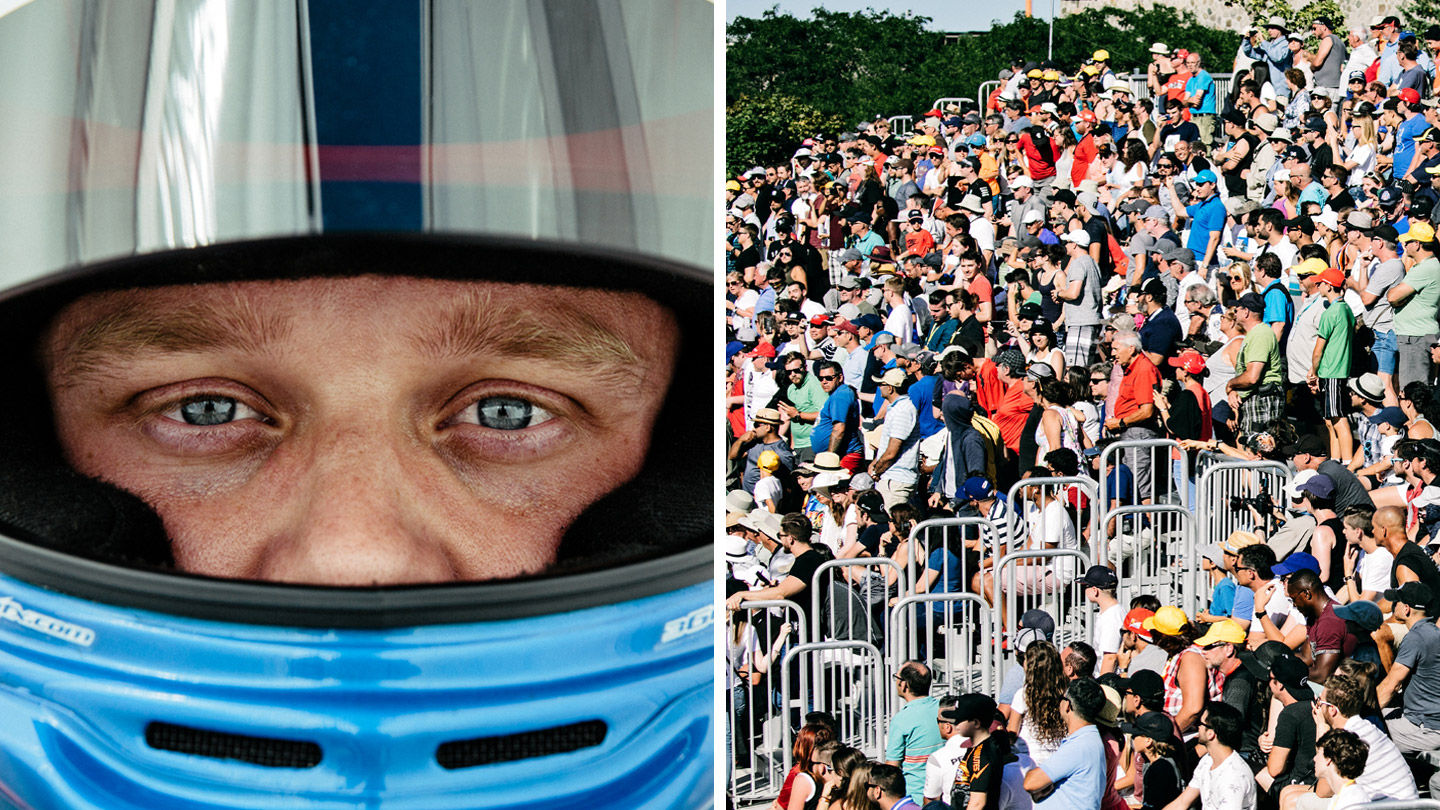
Rosenqvist remains in the lead after his switch, but he’s being chased down by Jean-Eric Vergne and his Chinese Techeetah team. On Lap 29, Vergne swoops around Rosenqvist uncontested. Losing top spot isn’t the end of the world, but Rosenqvist must stay ahead of the hard-charging Virgins behind him. His manager, fellow Swede and former F1 driver Stefan Johansson, alternates between nervously watching the broadcast on a TV and peering over Gill’s shoulder at the monitors. Mentally, they all have one hand on the steering wheel. Relief hits when a full-course yellow ensures there will be no more passing and Rosenqvist — along with Heidfeld in fifth — will secure the points Mahindra desperately needed when the day began. Vergne takes first place in the race, Di Grassi wins the drivers’ title for Audi and, despite an awful weekend, Renault e.dams — featuring four-time F1 champ Alain Prost as a senior manager — tops the team standings for the third straight year.
When the results are official, everybody at Mahindra erupts with the exception of Gill, who silently looks up and points two index fingers skyward. Then a booming voice that would stand out against any style of racing kicks in. “Thanks Mahindra!” Gill exclaims on the headset. “Everybody to the podium!”
The celebration is about one race. The series could be a win for us all.


